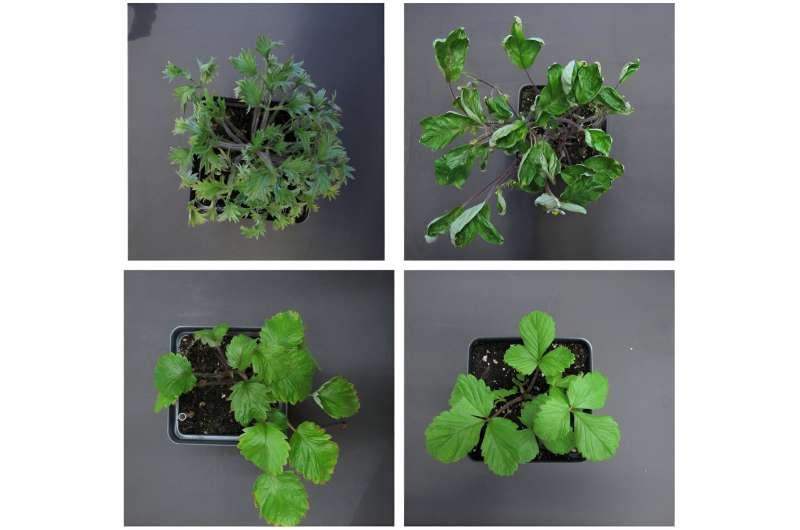This article has been reviewed according to Science X's editorial process and policies. Editors have highlighted the following attributes while ensuring the content's credibility:
fact-checked
peer-reviewed publication
trusted source
proofread
Scientists identify genetic mechanism responsible for plant leaf diversity

Plant leaves come in many different shapes, sizes and complexities. Some leaves are large and smooth, while others are smaller and serrated. Some leaves grow in single pieces while others form multiple leaflets. These variations in leaf structure play a crucial role in how plants adapt—and survive—in different environments.
"Plant morphology is diverse in nature," said Zhongchi Liu, a professor emerita in the University of Maryland's Department of Cell Biology and Molecular Genetics. "Morphological differences contribute to plant survival, including how well plants can regulate their temperatures and how efficiently they can transport water from their roots to the rest of their bodies.
"Understanding the mechanisms responsible for diverse leaf forms will lead to a better understanding of how plants can survive challenging conditions."
In a paper published in January 2024 in the journal Current Biology, Liu's lab identified two key regulatory pathways involved in the development of leaves on three types of strawberry plants with different leaf structures. Led by genes expressing each plant's distinct leaf complexity (single piece vs. multiple leaflets) or margin features (smooth vs. serrated edges), the two pathways took turns shaping the leaves over time.
This connection between the timing of these pathways' impacts on plant development and the resulting diverse leaf structures could be used to help plants adapt to or tolerate a greater range of conditions and environments, according to the researchers.
"If we can tune that relationship, we can do things like have the strawberries produce a larger biomass, potentially supporting more fruit production," explained Xi Luo, the paper's lead author and a UMD Department of Cell Biology and Molecular Genetics postdoctoral associate.
"We can also take these strawberries somewhere beyond their native habitat and expand their adaptivity by changing their leaf morphologies. More serrations mean they'll have higher resilience to cold, for example. And broader, smoother leaves can mean that they'll be better at surviving in warmer places."
Liu's team found that the two pathways impacted the strawberry plants at different stages of development. For example, the pathway ruled by the gene that expresses leaf complexity can dictate that a strawberry plant develops single-leaf formations rather than its usual trifoliate (three-piece) growth pattern.
As the plant matures, the pathway ruled by the gene that expresses margin feature can inhibit the CUC2 gene (which is responsible for how plant cells grow and divide) and limit how deep the leaf serrations are. As a strawberry plant grows, the pathways work together to activate or inhibit the CUC2 gene resulting in diversely shaped plants—which can increase a strawberry plant's chance for survival.
The researchers' findings are not limited to strawberries, though. Experiments with Arabidopsis (a small flowering plant related to cabbage and mustard) showed a similar regulation of the leaf margin features, suggesting that these shaping mechanisms may apply to many other plants as well.
Figuring out how plants control their leaf shapes offers scientists and agriculturalists new tools to help plants withstand heat and other climate conditions and conserve water more efficiently. And that brings scientists a step closer to preparing the world for the challenges presented by climate change.
"Research like this has many implications for our efforts in conservation and agriculture," Luo said. "We're now better equipped to protect our natural resources and food supply from extreme conditions."
More information: Xi Luo et al, Leaf dissection and margin serration are independently regulated by two regulators converging on the CUC2-auxin module in strawberry, Current Biology (2024). DOI: 10.1016/j.cub.2024.01.010
Journal information: Current Biology
Provided by University of Maryland





















